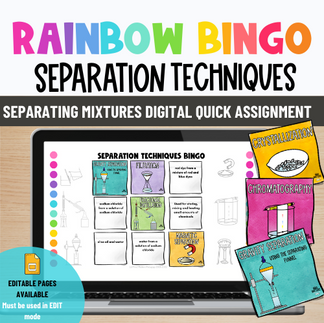Play Card Games to teach Ionic Bonding and Chemical Formulae
- Androy
- Jul 22, 2022
- 4 min read
Updated: Sep 15, 2024
Implement Game-Based Learning to Develop Student's Conceptual understanding of Chemical Formula
Understanding chemical bonding and writing the chemical formula for ionic and molecular compounds is a prerequisite for many fundamental concepts in chemistry such as: writing and balancing chemical equations, understanding the different types of chemical reactions, acid-base chemistry and the list goes on.
In the post : 4 Student Mistakes when learning to balance chemical equations and how to address them, I speak extensively about student difficulty when it comes to writing chemical formulas and I make a case for implementing the balancing charges method when teaching students this concept.
However, no matter how much we try there will always be those students who struggle though and utter the dreaded phrase “Chemistry is too hard!”
One strategy I have found success with, which my students seem to enjoy is a game-based learning approach in the form of a card game. The ultimate goal of the card game is to :
1. encourage the recognition of the common cations and anions and their charges and;
2. Develop students’ fluency in making ionic compounds with balanced charges.
Why Game-Based Learning Works:
Before we get into how to play the ionic bonding card game, we should go over why game-based learning is an excellent strategy for switching things up in your classroom.
Game-based learning is an active learning strategy where games are used to enhance student learning and conceptual understanding of different topics. Gamifying ionic bonding and chemical formulas (or any topic for that matter) has a few advantages:
1.Students forget they’re learning while they’re learning: some students become intimidated by worksheets and other such activities. Sometimes students just need a low stakes activity to take their mind off the work part and have fun while they’re still learning.
2.The games promote critical thinking and problem-solving as students need to develop different strategies in order to potentially “win” the game and out smart their opponent.
How to Play:
The ionic bonding card game needs two players or two teams.
Team work adds a collaborative element to the game where students can bounce ideas and strategies off each other. I personally prefer teams. If you plan on using teams 2-3 students per team would be ideal.
Each player or team will receive 5 cards ( I sometimes assign 7 cards to teams). The remaining set of cards should be shuffled and placed face down to the side.
Player 1/ Team 1 will draw their first card and place this down on the game board.
Player 2/ Team 2 will then attempt to make an ionic compound using the available cards in their hand.
Each card played is worth a certain number of points indicated by the stars in the top corner of each card. Each player should therefore try to gain the maximum number of stars from each play.
If Player 1/ Team 1 plays the lead ion card. Player 2/ Team 2 can either play a counter ion with a 2+ charge such as the oxide ion and gain two stars (as both cards are worth one star each).
Alternatively, Player 2/Team 2 can play a polyatomic ion such as the carbonate ion and gain three stars or two iodide ions. Both options are worth more stars.
This is where critical thinking and problem solving comes into play.
Once player 2 /Team 2 has made their move and formed a compound, they can then lay down a card and allow Player1/ Team 1 to make their play.
What happens if a player cannot form a compound?
If for example, Player 1/ Team 1 lays down a card and Player 2/ Team 2 cannot form a neutral compound with any of the cards in their hand then they must:
Exchange any THREE of their cards with THREE cards from the deck (the deck must be shuffled after the exchange)
Player 1 will then be allowed to steal the points by matching their own card.
The more students play the better they get at forming more complicated combinations by using multiple ions and polyatomic ions in order to get the maximum number of stars.
To help students learn to actually write and name these compounds formed, they are given a score card on which they will record the formula and names of the compounds they formed and the number of stars earned for each.
Students who have earned to most stars at the end of the game wins.
This game is fun for all age groups and even my older kids (ages 14-16) seem to love it.
Other Game-Based Learning Resources
The game-based learning approach has been working so well in my science classes that I have started gamifying as many activities as I can. If you are interested in other Game-Based Learning Resources You can check these out in my TpT store.

Save this to your Pinterest Board
Gain Access to All our Free Resources in our Members Only Library

References
Gee, James Paul. 2003. What Video Games Have to Teach Us About Learning and Literacy. New York: Palgrave Macmillan.


















